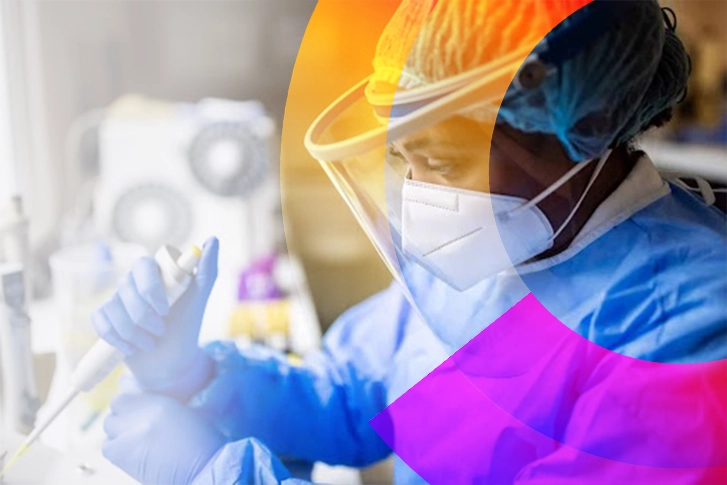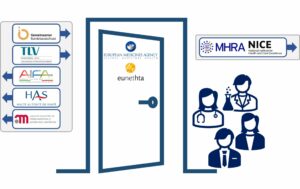March 11, 2024

March 11, 2024

This blog post has been updated since it’s original published date: December 22, 2020
The link between statistical methods and healthcare is not a new one, but the volume of available data to inform healthcare decisions and the use of data science in the medical industry has exploded in recent years.
Biostatisticians play a key role in the public health landscape, allowing scientists to support decisions made about patient care and better focus medical research, and to make sense of all of that available data.
It is important to understand the science and statistical principles behind the decision-making, and how important biostatistics is to the efficacy and efficiency of healthcare delivery and patient care.
Biostatistics is a field of study that links statistics and biology, through the use of traditional statistics techniques applied to public health and clinical trials. Biostatisticians are the experts behind the science, making connections – or finding a lack thereof – to determine, for example, whether an identified treatment is working, or the cause of a targeted illness.
Put simply, Biostatisticians turn available public health and clinical trial data into usable knowledge.
It is through the use of biostatistics that clinical researchers are able to draw inferences from gathered information. Biostatistics touches clinical research in a number of ways as part of a collaborative process from start to finish, including but not limited to the areas below.
In an ideal scenario, biostatisticians are called into clinical research studies at the very beginning, to support the clinical development team by study objectives, methods of data analysis, and overall study design to improve study outcomes. A key component of study design, for example, is the sample size, an area of expertise for any biostatistician. A sample size that is too small will result in an underpowered study that can draw no meaningful conclusions, while a too large sample size can be wasteful in both cost and time.
Biostatisticians support the creation of data management plans and identify areas of potential weakness in data collection. This in turn supports a high level of validity in data collection and analysis.
Biostatisticians take data collected as part of a clinical research study and use statistical methods to summarize that data and report on abnormal data trends or variables. Statistical methods and a description of the methodology used, visual representations (e.g. graphs or tables), and interpretations of data, are then included in clinical research reporting, ideally as part of a collaborative process between researchers and biostatisticians.
Biostatistics links life sciences data and statistics to inform a number of areas in healthcare and medicine.
Clinical trials looking to measure patient outcomes based on new treatments or diagnostic methods are crafted with biostatistics in mind. As described above in relation to clinical research, biostatisticians work behind the scenes to design clinical trials that allow for highly valid data collection methods. Clinical trials are behind advances in everything from the efficacy of new drugs on the market to analyses of clinical interventions affecting the public health to vaccines for the prevention of disease.
Advances in epidemiology, the backbone of preventative care and a key component in public health policies on a broad level, are supported by data analyzed by biostatisticians. It is biostatistics that looks at the links between the cause and effects of diseases, or the factors that contribute to a wider spread of disease. Biostatistics can also point to a lack of a link between hypothetical causes of a disease, allowing researchers to move their focus forward and eliminate risk factors.
Biostatistics on a more local level can also be used to improve patient care. Statistics gleaned from available studies can be analyzed and then used to craft more efficient healthcare systems, or individualized patient plans to improve outcomes for those patients. Data- and evidence-based decisions take bias out of the equation in a healthcare system as well, reducing the risk of ineffective treatments and inefficient patient care.
Biostatistics does not always mean the scientific analysis of fresh data. It can also mean meta-analysis of the wealth of data that is already out there. Examining medical research around a particular disease, for example, can lead to statistical trends around common risk factors, expected lifespans, and the potential for any environmental or genetic factors. This kind of statistical information and trends in data can then be used to point to potential treatment methods to support patient outcomes.
The application of biostatistics in healthcare only continues to grow, as do innovations in the field. Wherever data-driven decisions can:
The importance of biostatistics is only more obvious.
ProPharma is a leader in clinical research solutions, with services that include biostatistics. Contact us to find out how ProPharma can help you ensure that your statistical analysis is not only valid and complete but supported by the data and presented in a way that is easy to understand. Improve your data collection and analysis with ProPharma.

April 7, 2023
ProPharma’s Research Consulting Organization (RCO) model offers a fully customizable alternative for partnership with clients and sponsors. This year’s theme for World Health Day Health For All...

August 8, 2022
Pharmaceutical companies should understand EU Health Technology Assessment (HTA) authorities requirements early in the product development phase. Engagement with HTA authorities during clinical...
February 14, 2017
In the past two years, the FDA has approved two different types of intragastric balloon systems: Fluid-filled intragastric balloon systems, including the ReShape Integrated Dual Balloon System and...